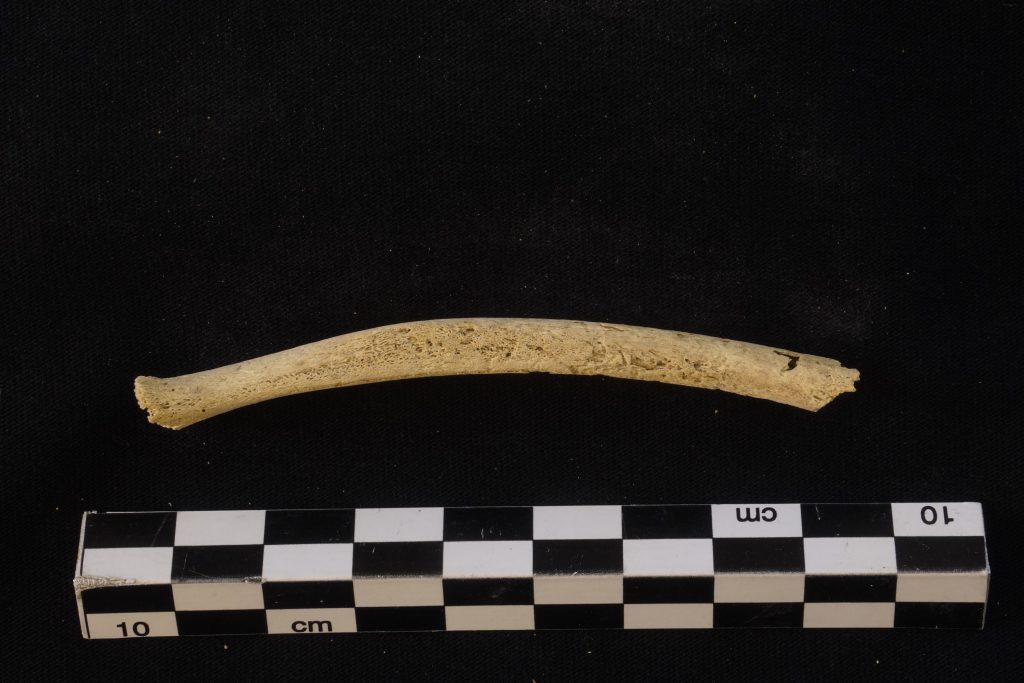My name is Emily Edwards, and I was a Pierre and Patricia Bikai fellow at ACOR in Summer 2018. I am currently a student of Dr. Megan Perry in the Anthropology M.A. program at East Carolina University in Greenville, NC. My current research project concerns the presence of metabolic diseases in the juvenile skeletal remains from Tell Hesban in Jordan.

Tell Hesban, located in the Madaba Plains region, has been inhabited, albeit not continuously, for over 2,000 years. My research concerns individuals who died during the Late Ottoman period, in the late 19th century, a time when the site was seasonally inhabited by different nomadic tribes. During this time, at least 62 individuals were interred, over half of whom were subadults under the age of 18. In the course of her preliminary analysis, my M.A. supervisor Dr. Perry noted that many of the individuals under the age of 10 exhibited indicators of metabolic disease. Through my research, I hope to use recently identified indicators of vitamin C and D deficiency, which have primarily been used on populations in Europe, to identify the extent to which this population was affected by these diseases, and why.
Believe it or not, I did not always want to study human remains. As a child I actually recoiled from skeletons and mummies in museum exhibits. However, I have always loved stories. As I grew older, I learned about the stories a person’s bones can tell us, and I was fascinated. Our bodies are like books, and the details of our lives are recorded within. Bones, because they are so durable, keep these records longer than soft tissue (provided the conditions are right). As an osteologist, I can look at someone’s skeleton and know not only if one ever fractured a bone, but also if another person had certain infections or cancers as well as if that person was particularly muscular. A person’s teeth can tell me if or approximately at what age one experienced a period of great physical stress (such as disease). I can tell whether one person ate more red meat or seafood, grew up in the same region in which he or she was buried, and, most importantly to my current research, whether the person was receiving adequate nutrition.
In my case, I am specifically studying vitamin C and D deficiencies in juvenile human skeletons. Unlike most other mammals, humans cannot synthesize vitamin C (ascorbic acid) and thus they must obtain the nutrient through diet. Citrus is perhaps most famous for having a high ascorbic acid content, but some vitamin C can also be found in other produce, such as peppers and parsley, and in smaller quantities in certain meat products. Vitamin C is crucial to the body’s production of collagen, an important connective tissue found in both soft tissue and bone. In individuals with vitamin C deficiency, or scurvy, blood vessels rupture easily, teeth become loose and fall out, ulcers form in the mouth, and joints become swollen. Bones in the skull, as well as the scapula (shoulder) and ilium (hip) become porous in response to the compromised soft tissues.

On the other hand, humans have the ability to synthesize vitamin D rather easily through exposure to sunlight. Because Jordan is bathed in sunlight, it seems counterintuitive that past inhabitants would suffer from inadequate exposure to the UV-B rays necessary for vitamin D synthesis. However, cultural factors, such as clothing, can limit sunlight exposure. It is possible to compensate for this lack through diet, as some foods like liver, eggs, and certain oily fishes provide small quantities of vitamin D. Individuals with vitamin D deficiency (rickets) cannot metabolize calcium. To maintain the levels of calcium in the blood, the body will scavenge calcium from the bones. The bones are then structurally compromised and will often bend under the individual’s weight, resulting in bowed legs and, in young children who are still crawling, arms.

After identifying these symptoms in the skeletal remains of the population from Hesban, I can analyze the patterns of occurrence in the population and determine if a certain age group was particularly susceptible to metabolic disease. Hopefully, this will help me identify why this particular population was so affected by vitamin C and D deficiencies and shed light on the lives of people largely absent from Ottoman records.
My research would not have been possible without the support of ACOR who gave me a space to conduct my analysis, and access to a wonderful library with historic accounts of travels around Tell Hesban, as well as reports by other researchers studying the area. Additionally, during my stay at ACOR, I was able to actually visit Tell Hesban and speak with Bethany Walker, one of the archaeologists who originally excavated the remains.
Written by Emily Edwards
